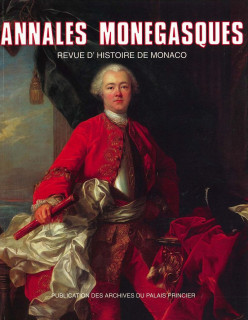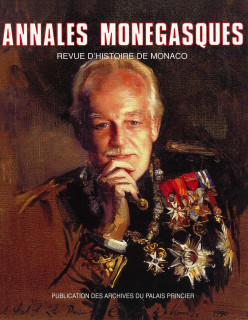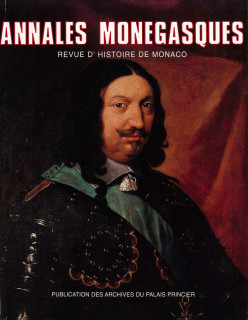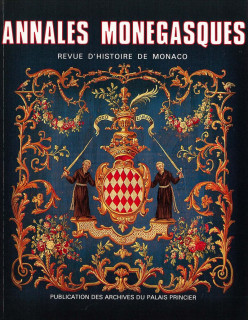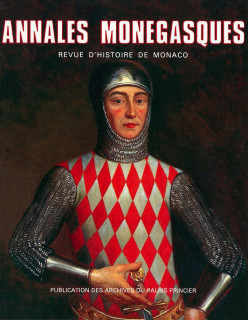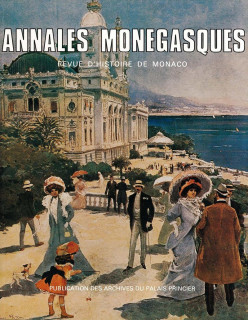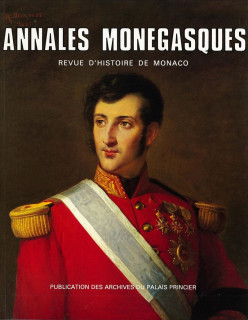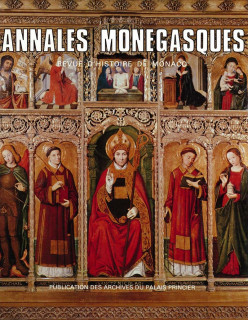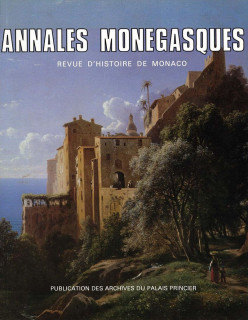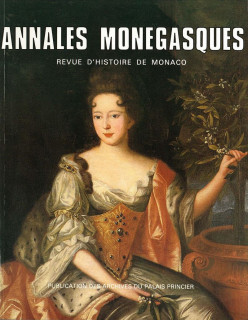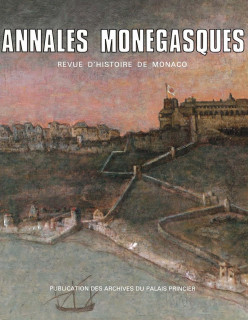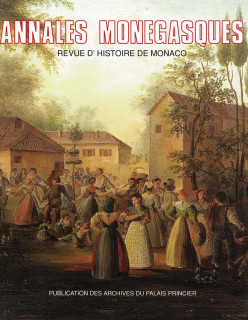
Annales monégasques

Summary
In this issue, three articles focus on the specificities of Honoré II, Albert I and Louise-Hippolyte, the only reigning princess. The volume dedicates the other studies to the attitudes history, among which the religious practice and the popular devotion at the very beginning of 16th century, as well as the clothes and their symbolism in the 17th and 18th centuries. Finally, some pages are dedicated to Gaston Leroux, and a night in the Casino of Monte-Carlo is also described. (full texts in French)
Summary
This issue focuses on different figures of the history : Giovanni Francesco Monno of Monaco, a cartographer of the 17th century; the Grimaldi Knight, who was the first governor of the 18th century and Antoine I’s son; Prince Honoré III during the French Revolution; the bust of General Krasinski realized by the Monegasque artist François-Joseph Bosio; Caroline Gibert de Lametz, who was a princess of Monaco in the 19th century, and the astronomer Francesco Maria Grimaldi. To finish with, an article also talks about the local dialect at school. (full texts in French)
Summary
This issue, celebrating the 50th anniversary of Prince Rainier III’s reign in 1999, is exclusively focused on five decades of politic actions, and publishes a rich iconography. (full texts in French)
Summary
This issue is particularly heterogeneous : chronologically speaking (from the 17th to the 20th century), and by the covered topics (architecture, music, literature, politics). The “Archives documents” is dedicated to one of the most important events of the Monaco history : the Treaty of Péronne, which has linked France to the principality for 152 years, and which is transcribed in its entirety. (full texts in French)
Summary
This volume deals with an important subject : the allergy discovery during the campaign of Prince Albert I, in 1901. Another study is dedicated to the Albergue‘s role in the Grimaldi dynasty founding in Monaco. Nevertheless, the authors also refer to the 17th and 18th centuries, by studying coin, art and politics. (full texts in French)
Summary
This issue is rather modernism-oriented. The “Archives document” honours a map dated 1602, and an article is dedicated to the Giornale by the priest Pacchiero. The 18th century is represented by Antoine I and both sides of his work (the creation of a path and poetry). However, the contemporary times are discussed within two other studies : In one hand, René Blum, who was the director of the Opera of Monte-Carlo in the 19th and 20th centuries, and on the other hand, seven Monegasque poets from the 20th century. To finish with, an article covers the origin of the Grimaldi dynasty, nearly seven centuries-old. (full texts in French)
Summary
This issue contains the second part of the commented translation of the Giornale by Don Pacchiero, as well as a follow-up of the hospital history in Monaco. The French Revolution is once again highlighted, through Prince Honoré III. This issue also assesses the action of Charles III in terms of tourism, and takes stock of the Prince Albert I involvement in the Dreyfus affair. (full texts in French)
Summary
The Giornale by Don Pacchiero is a very important source of information regarding the century of Honoré II, even if it’s too long to be included in this review in its entirety. However, the first part of a commented translation is presented in this issue. In order to complete our knowledge about the 17th century, an article covers the coin use under Honoré II. After a study about François-Jospeh and Jean-Baptiste in the previous issues, the authors now deal with the famous sculptor Astyanax-Scevola Bosio and the health history. To finish with, this issue also publishes the Emile Novella’s nostalgic look at the principality. (full texts in French)
Summary
Louis Bréa, a famous local artist, executed many important works, kept in Monaco. This is the subject of a new study, fully illustrated. Art is also an important component of the Hôtel Matignon layout. Its owner, Jacques de Goyon-Matignon, participated to a military expedition in Spain, recounted in his correspondence. Rufus Massa during the Revolution is also refered to, as well as some strictly military operations in Monaco and around, during the Second World War. (full texts in French)
Summary
This issue presents a range of articles chronologically uninterrupted. It first talks about the court ballets performed in Monaco in the middle of the 17th century, then Menton in the era of Louis I and Antoine I. The black penitents until the revolutionary troubles, are also refered to. The empire transformed the Palace into a beggars’ home, but after its fall, a Sardinian protectorate was established. In the next century, a study about a woman of letters’ relation with Monaco puts an end to this overview. (full texts in French)
Summary
The Monegasque population and society are once again reviewed in a broad article, thanks to a unique and original document. Another study refers to the spiritual capacity within this society and is illustrated by the example of the Confraternity of white penitents. An article about Princess Marie de Lorraine allows us to have a broader view of this era, while, regarding the 19th century, Nietzche, Wagner and the Opera of Monte Carlo are covered in another study. (full texts in French)
Summary
Two important studies are presented in this issue. On one hand, the plague in Monaco in 1631, on the other hand, the journeys of Prince Albert I in Africa. Arts are obviously discussed thanks to the publication of a musical correspondence and the early days of the cinema. The contemporary fortifications within the region are also studied. (full texts in French)

